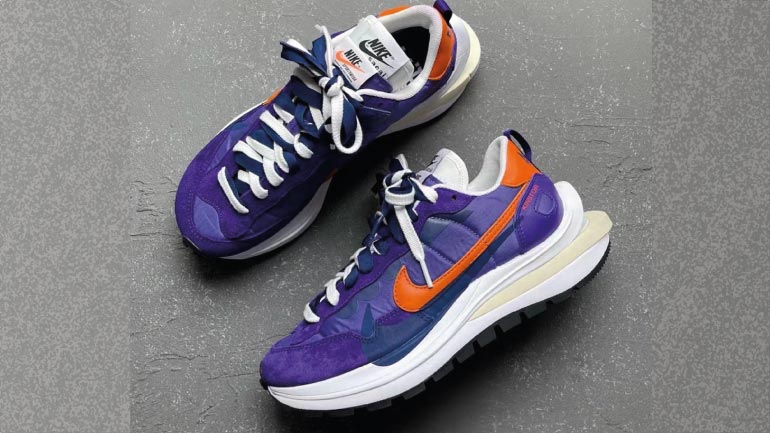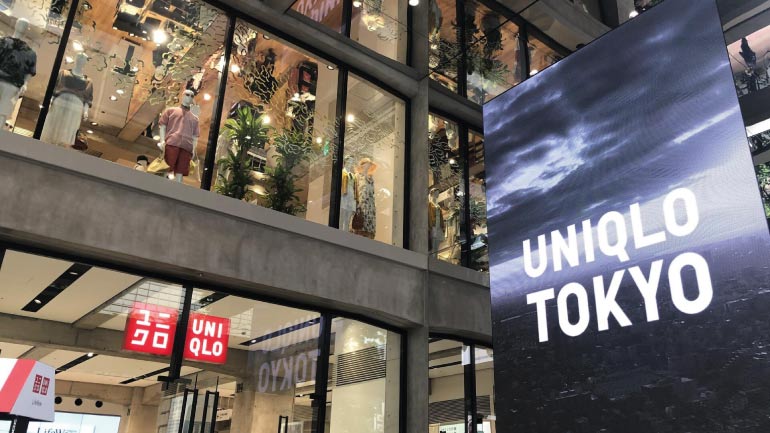

In 2021, the Asian fashion industry exhibited a unique mix of development, custom, and worldwide allure. A few top Asian design brands leave a huge imprint on the global stage, reclassifying patterns and setting new norms in the style world. From Japan's cutting-edge plans to South Korea's K-pop-propelled streetwear, and India's rich embroidery of conventional and contemporary styles, Asian design kept on enthralling design aficionados around the world. Brands like Uniqlo, H&M, and Zara extended their presence in the Asian market, while neighborhood monsters like H&M, Amorepacific, and Alibaba's Tmall overwhelmed the scene. This energetic combination of societies and imagination made Asia a force to be reckoned with in the worldwide design scene in 2021.
Zara, a noticeable Spanish-style retailer, has set up a good foundation for itself as a worldwide symbol in the realm of quick design. Established in 1974 by Amancio Ortega and Rosalía Mera, Zara is famous for its capacity to rapidly interpret runway patterns into reasonable, open, and great attire for the general population.
One of Zara's exceptional assets is its amazing inventory network and creation technique. Dissimilar to numerous contenders, Zara makes a significant part of its clothing in-house, considering quick plan-to-store conveyance times. This implies that Zara can answer quickly to rising styles, guaranteeing that their stores generally include the most recent styles. Their creative "quick style" model has reformed the business, making in-vogue clothing open to a great many shoppers.
Zara's clothing assortments take special care of a different client base, offering everything from easygoing wear to formal clothing, footwear, and frills. The brand has additionally embraced supportability lately, focusing on involving more eco-accommodating materials and practices in its creation processes.
Zara's worldwide presence has developed dramatically throughout the long term, with a large number of stores in the north of 90 nations. The brand's retail spaces are carefully intended to make a novel and welcoming shopping experience for clients. Zara's prosperity can likewise be credited to its capacity to adjust to changing buyer inclinations, embracing web-based business and computerized showcasing to draw in another age of customers.
In short, Zara's mix of in-vogue plans, fast creation, and a worldwide retail network has established its status as a main power in the design business. Whether you're searching for the most recent patterns or closet staples, Zara keeps on offering a different scope of a la mode choices for style-cognizant people around the world.

Sacai, a Japanese fashion brand established by Chitose Abe in 1999, has arisen as an exceptional and powerful player in the worldwide design scene. Known for its cutting-edge plans and imaginative way of dealing with dress development, Sacai has earned a devoted following among style devotees and superstars the same.
At the heart of Sacai's design reasoning is a guarantee to mixing differentiating components. Abe is prestigious for her capacity to combine divergent styles, materials, and feelings into strong and striking pieces. This combination of active apparel and high style, manly and ladylike, and customary and present-day sensibilities characterizes Sacai's particular look.
One of Sacai's champion highlights is its dominance of crossover articles of clothing. The brand succeeds in making clothing that shows up as though at least two pieces have been consistently merged, bringing about articles of clothing that are both outwardly captivating and profoundly useful. This approach has prompted joint efforts with significant brands like Nike, bringing about sought-after shoe plans and athleisure assortments.
Sacai's runway introductions are anxiously expected occasions in the design schedule, displaying Abe's capacity to push limits and challenge shows. The brand's obligation to craftsmanship and tender loving care is apparent in each fastidiously created piece.
While Sacai remains established in Japanese design sensibilities, it has accumulated global recognition and is retailed in a portion of the world's most renowned style shops. The brand's special mix of imagination and craftsmanship keeps spellbinding chic people looking for pieces of clothing that challenge customary classifications, making Sacai a genuinely particular power in the design world.

Undercover, a renowned Japanese style mark established by Jun Takahashi in 1990, has turned into an image of cutting-edge plans and nonconformity impact in the design world. With its defiant soul and imaginative manifestations, Secret has procured a worldwide following.
At the center of Secret's way of thinking is a combination of troublemaker feel, high design sensibilities, and scholarly profundity. Takahashi's plans frequently highlight dull, rebellious subjects, consolidating components of streetwear, troublemaker, and gothic impacts. This one-of-a-kind mix has earned consideration for its provocative, frequently secretive messages and imagery, making a puzzling charm around the brand.
Undercover’s runway shows are a scene of their own doing, known for their drama and narrating. Every assortment frequently tells a story that digs into complex topics, investigating the human condition, society, and existentialism. These introductions are a demonstration of Takahashi's capacity to consolidate design with workmanship, making vivid encounters that go past simple dress.
Joint efforts have been a critical piece of Secret's excursion, with organizations going from Nike to Uniqlo. These joint efforts have extended the brand's range while keeping up with its particular taste. The notorious Secret "U" logo, frequently seen on tennis shoes and embellishments, has become inseparable from streetwear extravagance.
Undercover’s effect stretches out past the domain of design. Its impact should be visible in music, craftsmanship, and mainstream society, with performers, specialists, and VIPs now and again seen wearing the brand's manifestations.
In short, undercover stands as a demonstration of the force of design as a fine art. Jun Takahashi's capacity to mix the vanguard with wearability has procured Secret a unique spot in the style world. It keeps on dazzling the people who look for a design that challenges standards and pushes imaginative limits, making it a respected name in the business.

Uniqlo, a Japanese worldwide clothing retailer, has procured its standing as a trailblazer of effortlessness, quality, and reasonableness in the style business. Established in 1984 by Tadashi Yanai, Uniqlo has become inseparable from agreeable, utilitarian, and smart apparel for individuals of any age and foundation.
Uniqlo's prosperity is attached to its obligation to give great nuts and bolts and closet fundamentals at open price tags. The brand puts serious areas of strength on texture development and innovation, offering a great many inventive materials, like Heattech for chilly climates and AIRism for breathable solace. These developments have made Uniqlo a go-to objective for regular wear.
Uniqlo's stylish is described by moderation and ageless plan. Its adaptable clothing requests to customers looking for both style and capability. The brand's coordinated efforts with eminent planners and specialists, such as Jil Sander and KAWS, have carried a hint of high style to its assortments, drawing in a different client base.
Uniqlo's retail spaces are known for their perfect, current designs and proficient shopping encounters. The brand's obligation to maintainability and moral creation is apparent through drives like its LifeWear idea, which centers around sturdy and economical dress, and its association with the Unified Countries to help the Reasonable Advancement Objectives.
Uniqlo's worldwide presence has extended quickly, with stores in significant urban areas around the world. Its web-based presence has additionally developed, permitting clients to get to its items from any place.
In short, Uniqlo's triumphant recipe of value, moderateness, and effortlessness has resounded with purchasers universally. Whether you're searching for an exemplary white Shirt, creative outerwear, or classy joint efforts, Uniqlo offers a scope of choices that take care of different preferences and ways of life, making it a commonly recognized name in the realm of style.
In conclusion, the world of brands envelops a different and dynamic range, with each brand conveying its remarkable character, impact, and effect. Whether it's famous extravagance brands like Chanel and Louis Vuitton, inventive tech goliaths like Apple and Amazon, or socially cognizant organizations like Patagonia and TOMS, brands have become indispensable parts of current culture and trade.
Brands are not simply logos and items; they are narrators, images of value, and insignias of trust. They address the substance of an organization, epitomizing its qualities, mission, and vision. In the present interconnected world, the force of marking stretches out a long way past the actual items, forming purchaser decisions and impacting buying choices.
Besides, marking is a fundamental driver of monetary development. Effective brands make occupations, drive development, and contribute fundamentally to the neighborhood and worldwide economies. They additionally lay out close-to-home associations with buyers, building unwaveringness and support that can persevere for ages.
The advanced age has altered marking, bringing about new ideal models of commitment and advertising. Web-based entertainment, online business, and information investigation have changed how brands reach, draw in, and figure out their crowds. This has opened up interesting open doors for customized encounters and local area building.
As society faces squeezing difficulties like ecological manageability, moral creation, and variety and consideration, brands are progressively taking on jobs as mindful corporate residents. Many are focusing on manageability objectives, embracing variety in their labor force, and informing, and supporting social causes.
In a quickly impacting world, the job of brands will keep on developing. They won't just reflect social moves but in addition drive them, forming the accounts and upsides of society. Brands are not static; they are living substances that adjust, improve, and move, making them an interesting and fundamental piece of our worldwide scene.